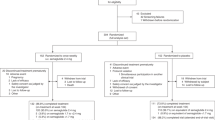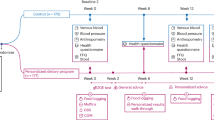Abstract
Objective: To partition the food reports of low energy reporters (LERs) and non-LERs into four aspects—tendency to report a given food, frequency of reports per user, portion sizes per mention, and the qualitative (low-fat, low-sugar, low-energy) differences of the reports—in order to determine what differentiates them from one another.
Assessment method: Two non-consecutive 24h dietary recalls. Low energy reporting was defined as energy intake lower than 80% of estimated basal metabolic rate.
Setting:In-home personal interviews.
Subjects: 8334 adults from a stratified, multi-stage area probability sample designed to be representative of noninstitutionlized persons residing in households in the United States.
Results: Across all different types of foods, there are those food groups which LERs are less likely to report (28 of 44 food groups), those which they report less frequently when they do report them (15 of 44 groups), and those for which they report smaller quantities per mention (26 of 44). Qualitative differences in the food choices—that is, differences in fat, sugar, and/or energy content—were not so widespread (4 of 24 food groups).
Conclusions: The practical application of analyses such as these is to improve the methods of gathering dietary data so that this kind of bias can be reduced. Further methodological research is needed to reduce the likelihood of respondents neglecting to mention foods and underestimating portion sizes.
European Journal of Clinical Nutrition (2000) 54, 281–287
This is a preview of subscription content, access via your institution
Access options
Subscribe to this journal
Receive 12 print issues and online access
$259.00 per year
only $21.58 per issue
Buy this article
- Purchase on Springer Link
- Instant access to full article PDF
Prices may be subject to local taxes which are calculated during checkout
Similar content being viewed by others
Author information
Authors and Affiliations
Rights and permissions
About this article
Cite this article
Krebs-Smith, S., Graubard, B., Kahle, L. et al. Low energy reporters vs others: a comparison of reported food intakes. Eur J Clin Nutr 54, 281–287 (2000). https://doi.org/10.1038/sj.ejcn.1600936
Received:
Revised:
Accepted:
Published:
Issue Date:
DOI: https://doi.org/10.1038/sj.ejcn.1600936
Keywords
This article is cited by
-
Mitigating underreported error in food frequency questionnaire data using a supervised machine learning method and error adjustment algorithm
BMC Medical Informatics and Decision Making (2023)
-
An ensemble method based on marginal-effect models (EMM) for estimating usual food intake from single-day dietary data and internal/external two-day dietary data
European Journal of Clinical Nutrition (2023)
-
Sugar-sweetened beverage consumption and breast composition in a longitudinal study of Chilean girls
Breast Cancer Research (2022)
-
Adherence to American Cancer Society and American Institute of Cancer Research dietary guidelines in overweight African American breast cancer survivors
Journal of Cancer Survivorship (2019)
-
Is misreporting of dietary intake by weighed food records or 24-hour recalls food specific?
European Journal of Clinical Nutrition (2018)



